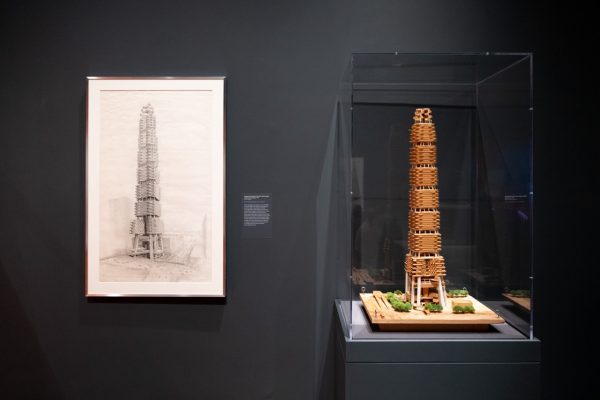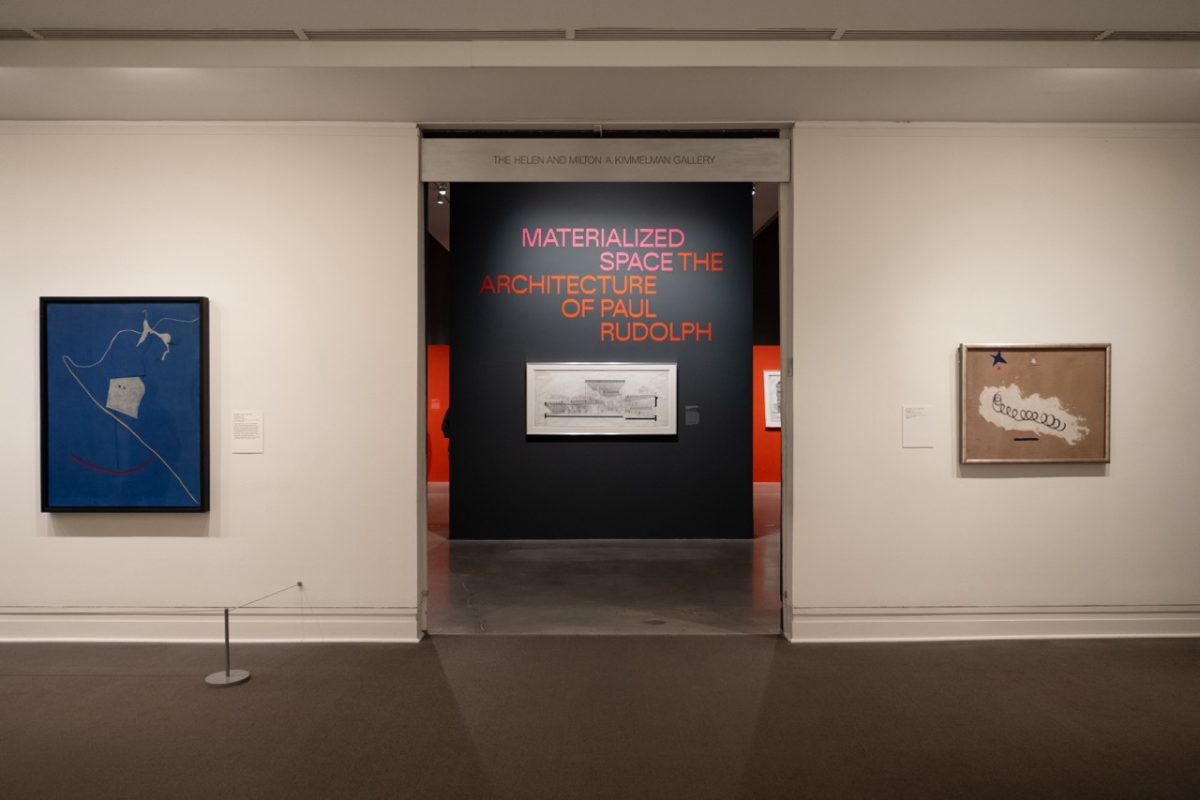Tucked in the back of the Metropolitan Museum of Art lies a modest Modern and Contemporary Art section which currently hosts “Materialized Space: The Architecture of Paul Rudolph.” The exhibition celebrates the utopian and monumental visions of this American architect amidst a renewed interest in Modernism and Brutalism.
Curated by the museum in collaboration with the Library of Congress’s Paul Marvin Rudolph Archive, the exhibition is the architect’s first major museum exhibition and the Met’s first major exhibition on 20th-century architecture in over 50 years.
The exhibition is not only an overview of Rudolph’s successful architectural career, but also examines the socio-political factors that shaped Brutalism’s fate in the U.S.
Rudolph was a well-known and celebrated architect, best known for the Yale Art & Architecture building. He worked in the much-contested Brutalist style. The exposed material and geometric shapes central to Brutalism are often associated with public buildings and social housing, making Brutalism a controversial subject since its conception.
From detailed pen drawings and wooden models to magazine features and personal inspirations, the exhibition captures Rudolph’s experimental spirit, spanning his early houses in Florida to his final skyscraper projects in Asia.
Rudolph had always been concerned with scale and space, aiming to make stunning architecture from the street level or afar. A perspective drawing of Rudolph’s unbuilt Sino Tower project is presented alongside a wooden mock-up of the same project, contrasting his two-dimensional and 3-D works. The drawing captures the tower from below, rendering it as a majestic urban spectacle. The model provides a viewing sensation that feels a lot more intricate and delicate, showcasing the craftiness of Rudolph’s vision.

A 1963 Vogue magazine presents Paul Rudolph on top of his newly finished Temple Street parking garage with his beloved Jaguar. The article calls Rudolph a “young mover” who is “changing the look of American architecture.” When viewers look up from the magazine, they will see a full-height photo print of the garage on a divider wall. The photo, shot from street level with perspective correction, renders the garage almost as a piece of minimalist art, with its soft yet stern monotone lines.
What is most impressive though, is the exhibition’s written content, which was concise, easy to read and provided relevant context that helped explain Rudolph’s career. A description on a drawing of Rudolph’s 1967 unbuilt Graphic Arts Center notes how trade unions opposed his construction methods, fearing it “would be so efficient as to take valuable work away from them.” While some projects, were simply too ambitious, others faced opposition because they prioritized social good over profit. Through this one sentence, the Met concisely explains the underlying controversy in Rudolph’s career and in the era of architecture as a whole.
With “Materialized Space,” the Met contributes to the discussion around Rudolph’s place within architecture history through a cohesive and masterful retelling of his career.
“Materialized Space: The Architecture of Paul Rudolph” is on display at the Met through March 16, 2025. Admission is pay-what-you-wish for NYU students with ID.
Contact Erwin Chen at [email protected].























































































































































